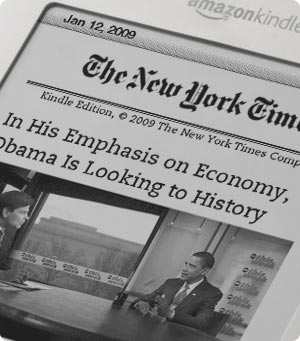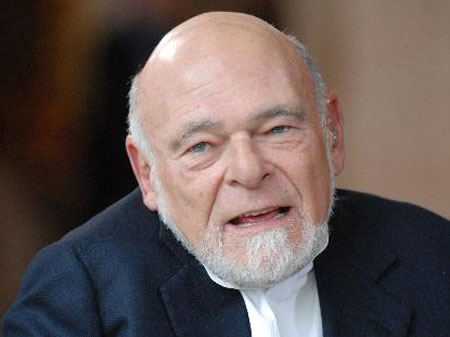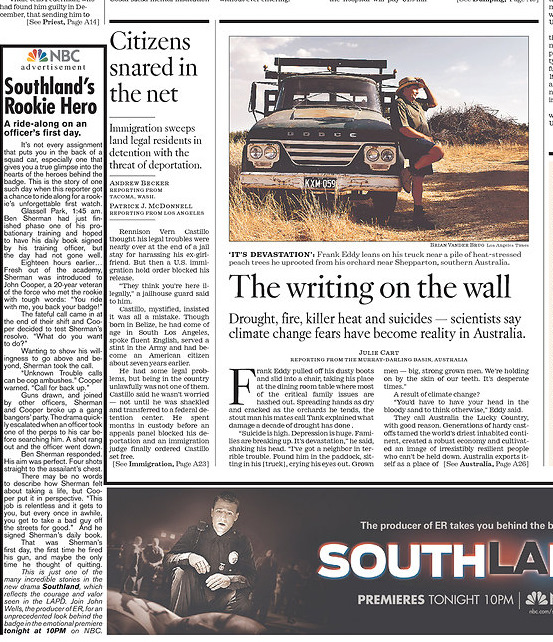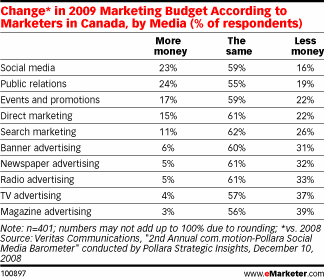Gawker’s Ryan Tate takes issue with the conventional wisdom that bloggers can’t be depended upon to cover local government. Keying off of David Simon’s testimony before Congress this week, Tate tells of his experience as a reporter in Oakland, Calif. pounding a local beat. “I often found that bloggers were the only other writers in the room at certain city council committee meetings and at certain community events. They tended to be the sort of persistently-involved residents newspapermen often refer to as ‘gadflies’ – deeply, obsessively concerned about issues large and infinitesimal in the communities where they lived,” he writes.
Tate makes an important point that’s been largely missing from the debate over the value of bloggers. The conventional wisdom is that these newfangled Internet publishers like to lounge in their pajamas all day and spout off about the news reported by the hard-working journalists who get paid to sit in boring local government meetings and pore over boring documents. No one in their right mind would do this kind of work without pay, the wisdom goes, so the decline of newspapers is the loss of an essential public service.
The flaw in this argument is that it assumes that no one cares about local government or will bother to waste time learning how it works. But our experience is somewhat different.
Engaged Citizens
Drop by any meeting of your local town government and you’ll find concerned citizens sitting in the cheap seats, watching intently what’s going on. What motivates these people? Usually, it’s passion for the topics being discussed. Whether it’s an increase in property taxes, a school bond, a new sewer project or a prohibition against walking dogs on the town common, citizens do come out to learn about issues that matter to them.
All of these people are, broadly defined, potential bloggers. Maybe their tools of choice don’t look like this one, but their desire to communicate is no less powerful than anybody else’s. Some may choose to use a listserv or e-mail list. They may tweet their opinions or share them on talk radio. But they have opinions to share and facts to convey.
Check out a list of bloggers in the borough of Brooklyn as noted in the blog rolls on Brooklyn Heights Blog and A Brooklyn Life. These people write about all sorts of things: local arts, events, politics, schools and community organizations. They’re not journalists, but they have a lot to contribute to a public discussion and they observe things at a level of granularity that few newspapers could ever match.
The twist is that every one of them has an opinion. Their “coverage” is filtered through the lens of their biases, which is uncomfortable for people who are accustomed to just-the-facts reporting. The flipside is that these people collectively gather far more information than news organizations ever could. With dozens of bloggers covering the borough of Brooklyn, can you really make the argument that citizens have less news available about the their community today than they did five years ago?
The challenge for news organizations is to develop new ways to synthesize and make sense of this deluge of information. Instead of assigning a reporter to cover city council meetings, it might be easier to set up a webcam and let citizens watch the proceedings themselves. Local bloggers can be co-opted to contribute to a news aggregation site in exchange for traffic. Journalists can be retrained to filter and interpret information and validate it against the video captured by the webcam. Coverage of events can be surrounded by opinion about what actually happened.
News organizations were created to serve a public that was starved for information. Today, the equation has flipped. We are drowning in information. The new role of journalists will be to simplify and contextualize. They’ll be serving a different need, but a need that’s no less pronounced than the one they served previously.
Kindle to the Rescue
 The newest port in a storm for the embattled newspaper industry is Amazon’s Kindle, a $500 handheld device that can store thousands of books and periodicals while retaining some of the look and feel of traditional print.
The newest port in a storm for the embattled newspaper industry is Amazon’s Kindle, a $500 handheld device that can store thousands of books and periodicals while retaining some of the look and feel of traditional print.
The reason publishers are swarming the Kindle is because of evidence that consumers will do something with it that they don’t do with their desktop computers: pay subscription fees. It’s not surprising that leading publishers like The New York Times and the Washington Post are syndicating their content through Amazon at fees of up to $14 per month. Both papers have announced programs to offer discounted Kindles to paying subscribers. The Detroit Free Press and the Detroit News are investigating ways to deliver devices from Plastic Logic of Mountain View, Calif. that offer a similar experience.
Is the Kindle the salvation for the industry? Not at $500, it isn’t. As long as Amazon premium-prices the device, the market will be limited to no more than about 5 million US users, according to Forrester Research. Most people aren’t ready to pony up that kind of money for a device that can easily be left in the back pocket of an airline seat, as happened to Sara Nelson, editor-in-chief of Publishers Weekly last year.
But don’t expect these prices to hold. At this point, Kindle has the market mostly to itself, but a slew of competitors are on the horizon. As Moore’s Law kicks in, expect prices to drop to the sub-$100 range within two to three years. Big publishers are doing the right thing to prepare themselves for mass-market digital reading devices, which could replace laptop computers over time. By not making the mistake of giving away their content for free on the Kindle, they can avoid the mess that has devalued their current online content.
Miscellany
If anyone thought the purchase of the San Diego Union-Tribune by an equity investment firm would save the company from major layoffs, their hopes have been dashed by news that Platinum Equity plans to lay off 192 employees — or about 19% of the U-T‘s workforce — over the next couple of months. The announcement came just three days after Platinum Equity completed its purchase of the paper from the Copley Press. Once the new owners, who are self-described turnaround specialists, dig into the property they just acquired, more layoffs will probably follow.
Rupert Murdoch wants to start charging for access to the newspapers owned News Corp., apparently in the belief that subscribers to the New York Post are just like subscribers to The Wall Street Journal. Good luck with all that. The Boston Globe is also looking into micropayments as a way to extract revenue from readers of its popular Boston.com website, reveals Globe publisher P. Steven Ainsley in an interview that is otherwise unremarkable.
Murdoch, who has been pessimistic about the economy for months, now says things are getting better. This week he declared that “it is increasingly clear that the worst is over,” and that “revenues are beginning to look healthier.” You wouldn’t know that from quarterly earnings just reported by Gannett, McClatchy and Lee Enterprises, but in all fairness, those are backward-looking indicators.
 You could do a lot worse than spend the next 20 minutes reading Jason Pontin’s
You could do a lot worse than spend the next 20 minutes reading Jason Pontin’s  As negotiations with the Boston Globe‘s unions continued past a midnight deadline, The New York Times Co. filed notice with the federal government today of its
As negotiations with the Boston Globe‘s unions continued past a midnight deadline, The New York Times Co. filed notice with the federal government today of its  Billionaire investor Warren Buffett reads five newspapers every day, but he
Billionaire investor Warren Buffett reads five newspapers every day, but he 
 The Boston Globe, evidently tired of all the razzing it was getting about its threatened shutdown,
The Boston Globe, evidently tired of all the razzing it was getting about its threatened shutdown,  Sam Zell now admits that his highly leveraged 2007 purchase of Tribune Co.
Sam Zell now admits that his highly leveraged 2007 purchase of Tribune Co. 

 Eric Alterman (right)
Eric Alterman (right) 
 McClatchy Co. CEO
McClatchy Co. CEO 

